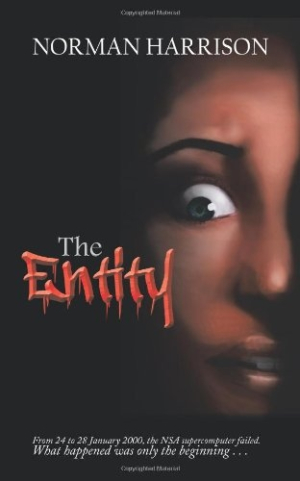The Entity
Thrillers based on technological prowess interest readers of both science fiction and murder mysteries. Falling firmly into that category is Norman Harrison’s The Entity.
Liz Young, an ambitious young special agent, settles into her new office at FBI headquarters in Washington, DC, to meet her boss, the formidable Jake Carbine. As with other characters in the novel, the author ascribes these two with last names reflective of personal qualities—Liz is much younger than Jake, who behaves like a fast-acting weapon. Determined to gain Jake’s respect, Liz works diligently to prove herself as she and Jake investigate the grisly murders of high-profile politicians and scientists in the United States. Anaka Donnatello, a skilled criminal profiler from Interpol, recognizes similarities to brutal killings in Milan and Paris and joins the team. Concurrently, deaths of lesser-known victims in St. Louis, Los Angeles, and elsewhere seem motivated by disgruntled ex-spouses but may have closer ties to the case. Hired assassins continue to kill, plant false evidence at murder scenes, and move on to new assignments.
The agents notice that Linda Stapleton, anchor of Global News Network, arrives at each new crime scene ahead of other reporters. Soon the story shifts to her luxurious penthouse home/office, just as dawn breaks over the city. Linda hears her computer beep and sees this message flashing on the blue screen: “GOOD MORNING, MISS STAPLETON. I HAVE A MAJOR STORY FOR YOU.” Grateful for yet another tip from her mysterious informant, she responds verbally, having realized several years before that whoever this is has the capability to hear her voice from any distance, and even read her mind.
The author makes good use of dry wit to depict human inadequacies. For example, Jake wonders if high-ranking officials within the United Nations might aspire to run the world. Anaka responds, “I don’t think there’s anyone there who could organize a sock drawer.”
Intrigue mounts as the technological machinations to achieve world domination grow darker. Liz gains the confidence of the only surviving scientist capable of averting disaster, secretly meets with him, and promises to tell no one about his plan. Later, when Jake asks her, during a briefing, “Is there something else I should know?” Liz responds negatively, but Anaka observes that Liz’s body language shows she’s hiding something from them.
This book’s intricate plot moves deftly from one locale to another, with numerous changes of scene and character. For the most part, Harrison integrates these transitions smoothly. Toward the end of the book, though, he rushes the narrative to its conclusion, resulting in a few unclear transitions.
Harrison writes in a conversational style, and he does a good job of defining his characters through dialogue and interaction. The cover depicts a woman’s frightened face against a black background, which reflects the novel’s menacing theme. But apostrophes added unnecessarily to plural nouns, missing words and letters, characters identified incorrectly, and inaccurate geographical information undermine the book’s impact.
Nevertheless, readers interested in a fast-paced thriller threatening world destruction by an uncontrollable force will enjoy Harrison’s novel. A sequel to The Entity is planned.
Reviewed by
Margaret Cullison
Disclosure: This article is not an endorsement, but a review. The publisher of this book provided free copies of the book and paid a small fee to have their book reviewed by a professional reviewer. Foreword Reviews and Clarion Reviews make no guarantee that the publisher will receive a positive review. Foreword Magazine, Inc. is disclosing this in accordance with the Federal Trade Commission’s 16 CFR, Part 255.

